Search Images
Browse Content (p. 1452)
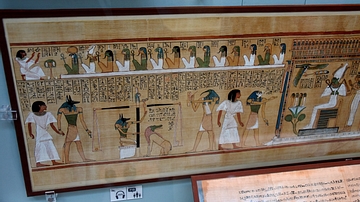
Image
Book of the Dead of Hunefer
This is the Book of the Dead of Hunefer (Hw-nfr). There are fully colored vignettes (scenes) with a colored border. The scenes demonstrate episodes in Hunefer's judgement in the afterlife. From Egypt. 19th Dynasty, 1292–1189 BCE. (The British...
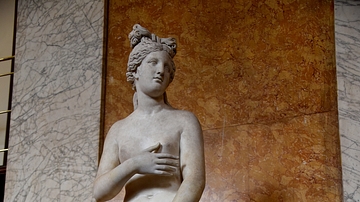
Image
Venus
Nude Venus of the Capitoline type. Found at Campo Iemini in 1794 CE in excavation conducted by Robert Fagan and sponsored by Prince Augustus Frederick, son of George III. Possibly restored by John Deare. Subsequently in the collection of...
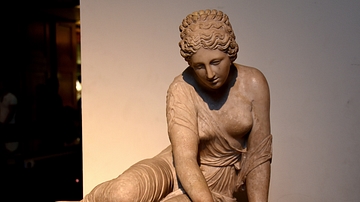
Image
The Knucklebone Player
A young girl plays a game of knucklebones, using animal bones as 4-sided dice. Roman marble sculpture, 1st to 2nd centuries CE, acquired by Charles Townley in 1768 during his first grand tour of Europe.
The British Museum, London.
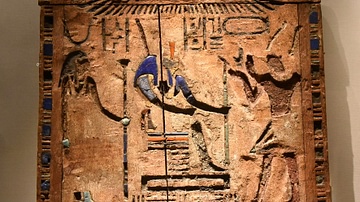
Image
Darius I as Pharaoh of Egypt
This wooden door shows Darius I (reigned 521-486 BCE) dressed as pharaoh on the right, making an offering to the Egyptian god Anubis. The goddess Isis stands on the left. The door originally belonged to a box (or naos) used to contain statuettes...
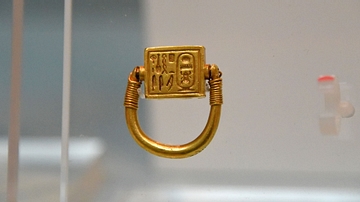
Image
The Ashburnham Ring
Gold ring with the name of Thutmose III and epithets: "Menkhperra beloved of Ptah beautiful-of-face'. The verso has the Two Ladies name of the king: "Great of Terror in All Lands". The ring was found inside the tomb of Djehuty. From Saqqara...
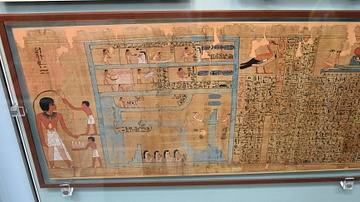
Image
Book of the Dead of Userhat
This is an early example of a Book of the Dead papyrus by the scribe Userhat. The vignette shows the Field of Reeds, the goal of the blessed dead, in which agricultural activities were conducted. From Thebes, Egypt. 18th Dynasty, c. 1450...
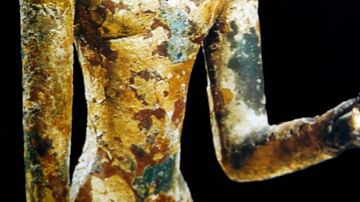
Image
Reshef
A gilded bronze statue of the Phoenician god Reshef. From Byblos. (National Museum of Beirut)
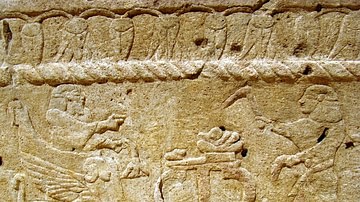
Image
Phoenician Religious Sacrifice
A scene depicting a bird sacrifice, a common practice in the Phoenician religion from the sarcophagus of Ahiram, king of Byblos, 10th century BCE.
Beirut National Museum.
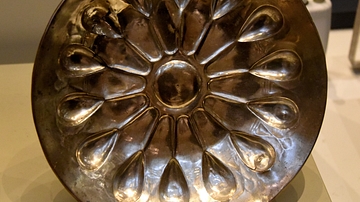
Image
Achaemenid Silver Bowl
This was among the first Achaemenid silver objects discovered in Iran. The light inscriptions are probably ancient marks of ownership. They were found on many other silver bowls. They confirm the comment made about the Persians by the 5th...
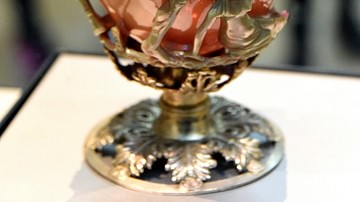
Image
The Lycurgus Cup
This magnificent glass cage cup is is decorated with scenes from the myth of Lycurgus, a king from Thrace. Lycurgus attacked Dionysos, the Greek god of wine, as well as the maenads (Dionysos' female followers) and Ambrosia the nymph. Ambrosia...